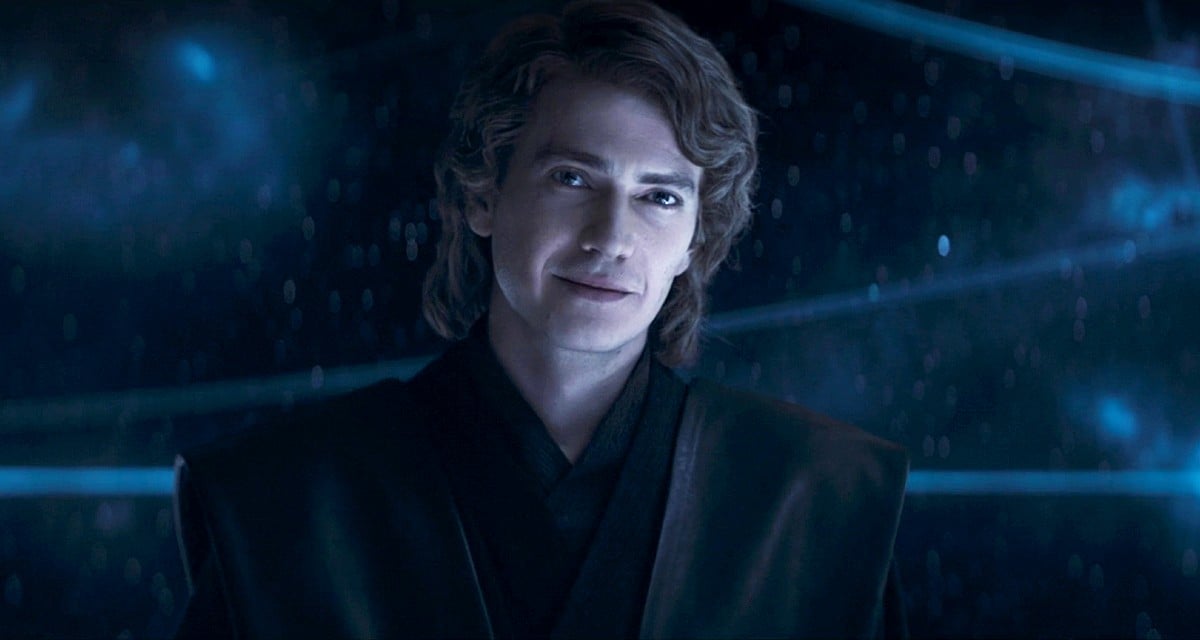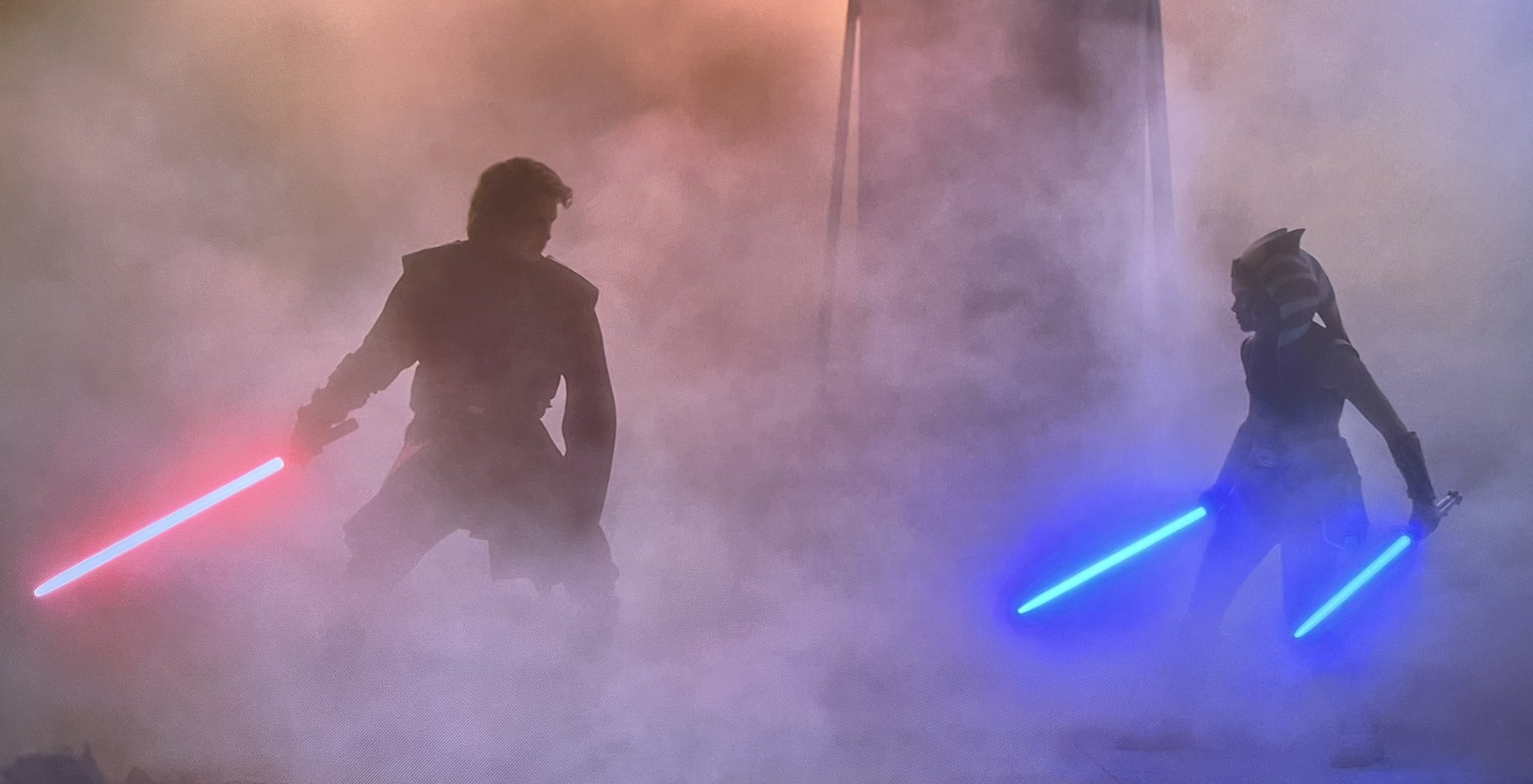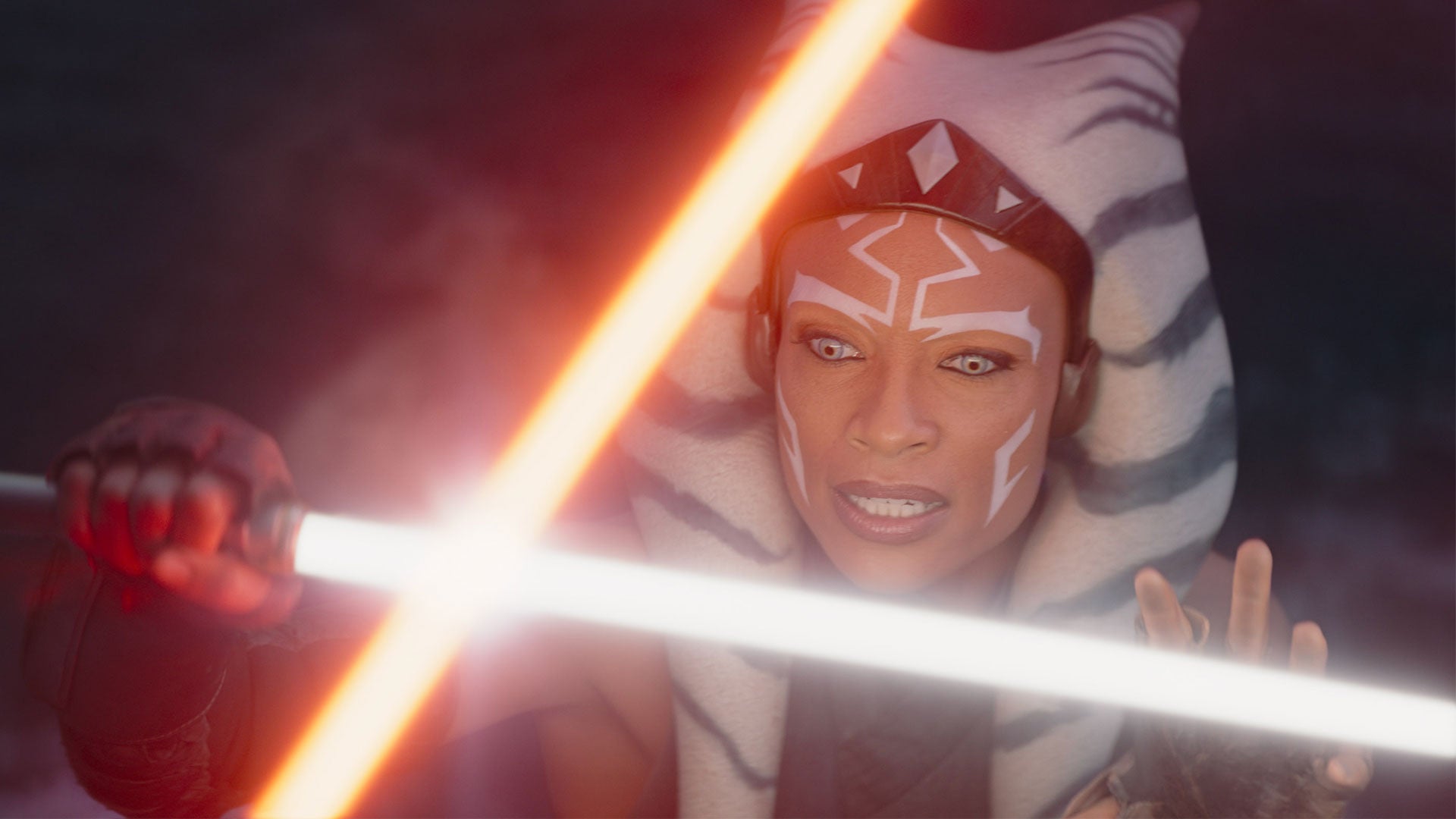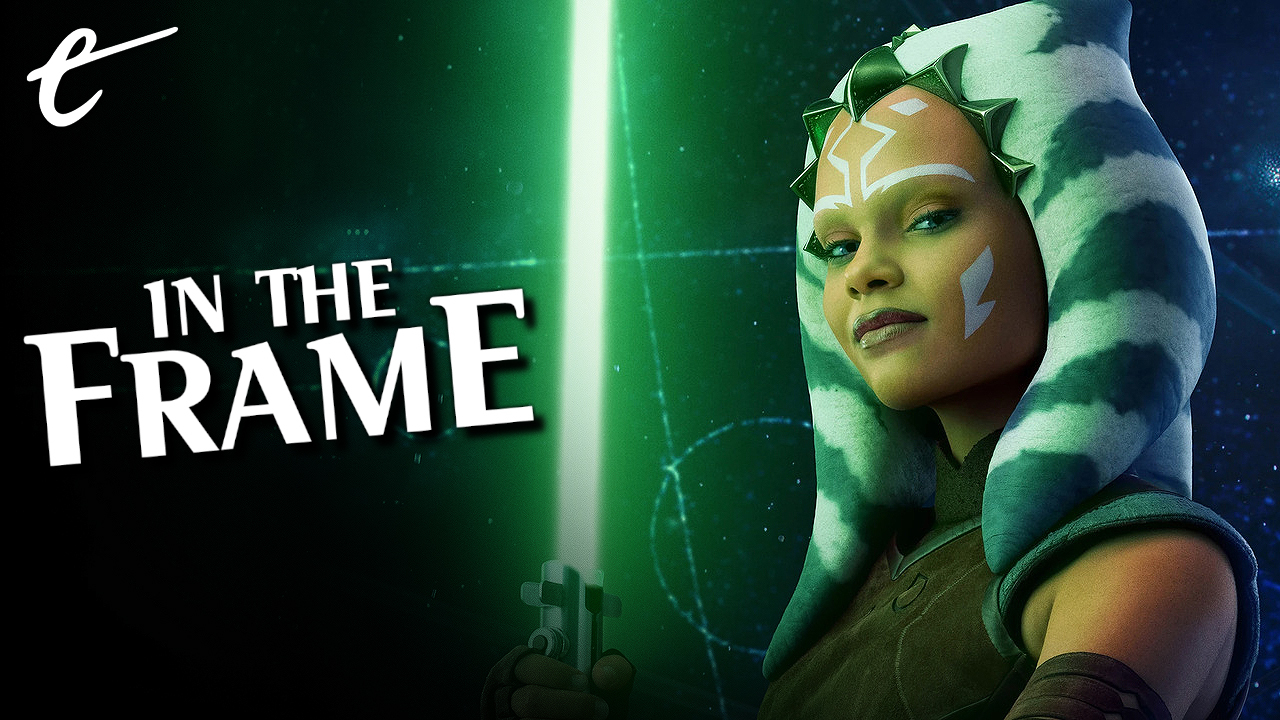This discussion on empty nostalgia contains spoilers for Ahsoka episode 5, “Shadow Warrior,” streaming on Disney+.
The fifth episode of Ahsoka, “Shadow Warrior,” brings back Hayden Christensen as Anakin Skywalker.
The episode treats this as something of a big deal. Notably, it is the second of only two episodes in the season to be directed by showrunner Dave Filoni. It was also screened in cinemas. In theory, it’s easy to understand the excitement around the episode. Anakin Skywalker is a hugely important figure in Star Wars lore. He is the cornerstone of the nine-film “Skywalker Saga.” As Darth Vader (David Prowse, James Earl Jones), he is one of the most iconic villains in movie history.
Even just within the internal continuity of Ahsoka, Anakin’s return should be a pivotal moment. In Star Wars:The Clone Wars, Ahsoka (Ashley Eckstein) was introduced as an apprentice to Anakin Skywalker (Matt Lanter). This had the effect of establishing Ahsoka as an important character in the larger Star Wars mythos. However, given that The Clone Wars was set between Star Wars: Attack of the Clones and Star Wars: Revenge of the Sith, there is considerable drama to be mined from Anakin’s subsequent fall from grace.
In practice, however, it’s hard to get particularly excited by any of this. As with so many major modern franchises, there’s an increasing sense of diminishing returns. “Shadow Warrior” doesn’t really do much that Disney’s Star Wars shows haven’t already done, and it makes a song and dance out of doing it. Watching “Shadow Warrior,” it seems like the episode believes that having Hayden Christensen reprise his role as Anakin Skywalker is enough to make it compelling.
However, Christensen hasn’t been away from the role for particularly long. He was a recurring guest star on Obi-Wan Kenobi, which also made a big deal of bringing him back to the Star Wars franchise. Entertainment Weekly published a cover story that recounted how Obi-Wan Kenobi director Deborah Chow traveled to Christensen’s farm to convince him to don the cape and mask. Christensen played Vader in the show, but also briefly appeared as Anakin in a flashback in the fifth episode.
Related: Okay Ahsoka, Enough with the Maps

Bringing back Hayden Christensen for Obi-Wan Kenobi felt special and significant. It doesn’t matter that the show itself felt more like a checklist provided by executives than a narrative crafted by storytellers. However, the more often that something happens, the less special and significant it becomes. Instead, it becomes mundane and predictable. This is a problem, given that “Shadow Warrior” clearly wants Christensen’s return to feel important.
Still, setting aside Christensen’s appearance, there is still the narrative justification of the reunion between Anakin and Ahsoka, now played by Rosario Dawson in live action. However, this storytelling loop was already closed off in Star Wars: Rebels. That show’s second season built to a two-part hour-long finale, “Twilight of the Apprentice,” which made an event out of this confrontation between student and teacher. Directed and co-written by Dave Filoni, that episode felt like closure for the pair.
As such, the most significant thing about “Shadow Warrior” is that it marks the first interaction between Anakin and Ahsoka in live action. However, these versions of the characters are played by actors who have no established history together. Christensen and Dawson are sharing their first scenes together, but “Shadow Warrior” presents those scenes as if they are momentous or noteworthy simply because they combine elements that fans recognize from other contexts.
There is a sense that “Shadow Warrior” is aware of this. While Christensen appeared as the cliffhanger to the previous episode, “Fallen Jedi,” Anakin has little impact on the actual plot of “Shadow Warrior.” Ahsoka’s conversations with him take place as she drifts between life and death, having been thrown into the ocean by Baylan Skoll (Ray Stevenson). These conversations just eat into the runtime while General Hera Syndulla (Mary Elizabeth Winstead) searches for Ahsoka.
The central tension between Ahsoka and Anakin in “Shadow Warrior” is the question of whether Ahsoka will ever truly escape Anakin’s shadow. “You’re a warrior now, as I trained you to be,” Anakin tells Ahsoka. “Ahsoka, within you will be everything I am. All the knowledge I possess. Just as I inherited knowledge from my Master and he from his. You’re part of a legacy.” However, being part of legacy means accepting that future generations will move on in some way.
“But my part of that legacy is one of death and war,” Ahsoka responds. Anakin offers a decidedly egocentric counter-argument, “But you’re more than that. Because I’m more than that.” When Ahsoka rightly points out that Anakin was “more powerful and dangerous than anyone realized,” he pushes back. As with so much modern franchise media, there is an unsettling implication that Ahsoka exists primarily as a vehicle for Anakin’s redemption, that children exist to validate their parents even while dealing with their messes.

“Shadow Warrior” is frontloaded with Anakin. The character dominates the first half of the episode, disappearing almost exactly 26 minutes into the 52-minute episode. From that point on, the episode returns its focus to Ahsoka’s pursuit of Morgan Elsbeth (Diana Lee Inosanto), culminating in a hyperspace jump to another galaxy. Still, it feels like another stalling tactic in a season of streaming that has spent a lot of time spinning its wheels.
In some ways, it feels unfair to burden Ahsoka with this criticism. The show itself is largely competent in terms of its basic mechanics, particularly compared to The Book of Boba-Fett and Obi-Wan Kenobi. It just feels like the longstanding issues with the Star Wars streaming shows have finally built to critical mass, and Ahsoka is the straw that breaks the camel’s back. As critic Brendan Hodges noted recently, “Goodwill for Star Wars is nearly at an all time low.”
After all, the issues with Christensen’s guest appearance in Ahsoka are basically the same problems that came with the computer generated Luke Skywalker (Mark Hamill) in both The Mandalorian and The Book of Boba-Fett. There is perhaps a novelty in seeing something like this done once. It’s exciting and interesting. It’s fun to let the audience’s anticipation build and then to pay it off. However, doing the same trick repeatedly seems destined to disappoint.
In a broader sense, this is the big issue with Disney’s approach to the Star Wars brand, and has been since at least Solo: A Star Wars Story. Star Wars used to be something special and significant. Allowing for the tie-in media and ephemera, there was once a finite amount of live action Star Wars. This had two benefits. First, it ensured that the franchise was accessible with a minimum amount of homework. Second, it meant that every new piece of Star Wars was an event unto itself.
This is why Star Wars: The Phantom Menace was such a phenomenon in 1999. It was only the fourth Star Wars film. As such, it raced to become the first film to gross $100 million in five days, the fastest film to $200 million to that point, and would eventually peak as the third highest-grossing movie of all-time to that point. “When you have this much anticipation, it’s like a stallion waiting to get out of the gate in a horse race,” explained Paul Degarabedian, president of box office monitor Exhibitor Relations.
When Star Wars: The Force Awakens released in 2015, there had not been a new live action Star Wars film since Revenge of the Sith, over a decade earlier. As a result, there was a lot of pent-up demand. Its release was, to quote John Patterson, “the box office equivalent of an extinction-level event.” On release, the film became the highest-grossing movie of all-time at the American box office. Again, the novelty was a large part of the appeal. There was a finite amount of Star Wars, so any addition was noteworthy.
Related: In ‘Time to Fly,’ Ahsoka Continues to Play the Familiar Hits

It’s no secret that Disney has been trying to turn Star Wars into a franchise comparable to the Marvel Cinematic Universe (the MCU), which could release several movies every year and demonstrate consistently impressive box office returns. This is most obvious with the company’s streaming offerings, which are densely interconnected and overlapping, and reportedly building to a gigantic crossover movie.
There are several problems with this approach to Star Wars. In a general sense, no company has been able to replicate the success that Disney enjoyed with the MCU, and there is some evidence that the MCU itself is experiencing diminished returns tied to the volume of output. However, even if that model could be reliably replicated, it goes against a lot of what makes Star Wars special as a pop culture touchstone by diluting the brand.
One of the largest media companies in the world, Disney has demonstrated that it can do anything that it wants to. It can resurrect dead actors like Peter Cushing, it can de-age living actors like Mark Hamill, it can create computer simulations of James Earl Jones’ voice. Money is no object, and the company exerts an incredible amount of influence. One of the big points of contention in the current SAG-AFTRA strike is the plan for studios to scan actors’ images and hold on to those likenesses in perpetuity.
Even setting aside the uncomfortable ethical implications of this approach, there inevitably comes a point at which this ceases to be impressive on its own terms. If anything is possible, then nothing is special. For years, major franchises like Star Wars have been treating nostalgia as spectacle, assuming that the return of some beloved recognizable piece of iconography will be enough to hold the audience’s attention. These franchises become museums to their own self-importance.
However, there are only so many times that these properties can bring back familiar elements and expect viewers to applaud in recognition. Hayden Christensen already had his big return to the part of Anakin Skywalker. Ahsoka has already confronted Darth Vader. To be clear, this is not to suggest there isn’t more to be done with these characters, simply that these nostalgic references are no longer self-justifying. If Ahsoka is going to bring in Christensen, it needs to do something with him.
In some senses, “Shadow Warrior” is the perfect metaphor for the state of modern franchises like Star Wars, stuck in a digitally rendered limbo haunted by familiar faces.






Published: Sep 18, 2023 11:00 am